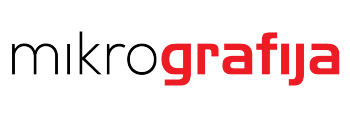In reality, there is no need to be a salesman or a manager to find ourselves in a situation where we need a specific document immediately and there. Because business is sometime a game that requires quick responses, access to credible information is only a click away.
Think about solutions like e.g. Dropbox, ShugarSync or in the company most likely the most widespreaded – sharing documents on a corporate shared network in a shared folder. Such technical and user solutions in fact solve the management and sharing of documents in their most basic function. The document is accessible to many people, different departments. They have insight and/or the right to modify and update, move to/from folder, bownload and even delete. All who who have access to a shared folder have similar or even identical rights. If your only wish is to get the document out of your local enviroment into an enviroment where it is accessible to many people, than you have successfully solved the task. The truth is, every living organization has its own structure and dynamics. It turns out that a single bunch of people can work with one document, it has a different weight for each and it is important to know what path it travells.
Documentation systems (DMS) are not just a solution to manage and share documents. Provide support for internal processes. Document systems are not just a structured way of document feeding, they are a live system that has the goal of facilitating and speeding up the decision making and operational efficiency of the organization. And if we touch the key functionality you get with document systems (and you don’t have it with sharing documents):

SAFETY is actually one of the key features and differences. By simply sharing documents, you do not have the option to set name rights, specify who can do something on a (single) document, or you have no option to see who and when accessed the document. For each document, it is possible to specify that the system sends you a message if any change has been made to the document.

AUDIT TRAIL is a functionality where you can access all versions of a document, with the possibility of insight into the changes by users who have made the change and with the time stamp when the change was made.

CONTROL of documents is an important aspect of each organization. The document system enables automation of workflow based on pre-defined steps and the definition of the tasks, where we can if desired, define what the employee has to do on a document. It also enables the distribution of e-mails, web forms and other electronic documents by a pre-defined paths. It makes it possible for each post, form or document to find its addressee knowing that it has also been seen and familiarized with.

STANDARDIZING the work with documents makes the company work to the point where the work with the documentation no longer represents a time loss and becomes an advantage. Information is accessible at once and any time (and anywhere if we have a solution in the cloud).

SCANNING is practically part of the document system. If you succeeded with your partners and suppliers to arrange electronic mail forwarding, electronic invoice and you allready do electronic business with your bank, you are still left with quite a few paper mail and important documents that you need to include and add to the document system. Documentation digitalisation is a service that converts paper documents into digital form, so you can manage them electronically and within the system that you use.

ACCESS TO documents is not entirely self-evident. We recently had an example of a client who, in addition to manage work with documents, also wanted her employees, who are widely present in the eastern markets, specifically China, to access larger formats content. Solutions such as Dropbox is forbidden there.

MODULARITY is a functionality that you might want from your document system. If your document system allows the implementation of modules when you are ready for them and when you need them then introducing document system can go without excessive stress and with gradual changes.

INTEGRATION WITH OTHER SOLUTIONS, such as existing ERP, CRM, SCM systems, other technical and archival solutions and, of course, the possibility of introducing electronic signatures, which is still the last step towards a paperless office.
In our company, which marks its 25th anniversary this year, paper management has become a way of thinking. We use the system we offer to our customers ourselves, we develop them according to the needs of the market and in a partnership with customers. It is important that our solutions are certified, secure and upgraded. We are aware that the decision to implement the DMS is strategic and represents a (big) change, but at the end of the path it ensures the netness, targeted management and effictivness of the organization. All for the purpose of easier and faster decision-making.


